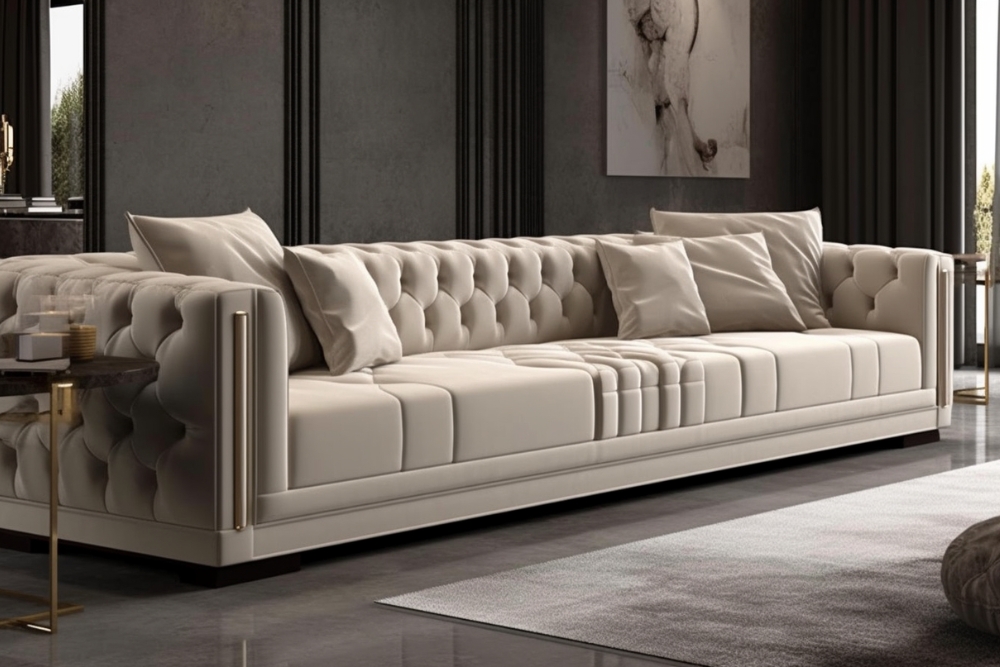Explore helpful tips on choosing sofas
Selecting the right sofa involves more than just picking a color or style that catches your eye. A sofa is often the centerpiece of your living space and a significant investment in both comfort and aesthetics. Understanding the various elements that contribute to a quality sofa—from construction and materials to size and support—can help you make an informed decision that suits your lifestyle and budget.

Discover Various Sofa Styles
Sofas come in a wide range of styles, each offering distinct characteristics that can complement different interior design preferences. Traditional sofas often feature rolled arms, tufted backs, and ornate wood detailing, making them ideal for classic or formal living rooms. Contemporary sofas tend to have clean lines, low profiles, and minimal ornamentation, fitting well in modern spaces. Sectional sofas provide versatile seating arrangements and work particularly well in larger rooms or open floor plans, while loveseats and apartment-sized sofas are designed for smaller spaces. Mid-century modern styles have seen a resurgence, characterized by tapered legs, simple silhouettes, and retro appeal. Sleeper sofas offer dual functionality, transforming from seating to sleeping surfaces, which can be valuable in homes with limited guest accommodations. When exploring styles, consider how the sofa will integrate with your existing decor and whether its aesthetic will remain appealing over time.
Understand Fabric Options for Durability
The upholstery material you choose significantly impacts both the appearance and longevity of your sofa. Natural fabrics like cotton and linen offer breathability and a soft texture but may require more frequent cleaning and can be prone to wrinkling. Leather, whether genuine or bonded, provides a sophisticated look and is relatively easy to clean, though it can be sensitive to scratches and may require conditioning to prevent cracking. Microfiber and polyester blends are popular for their stain resistance and durability, making them practical choices for households with children or pets. Velvet adds a luxurious touch but may show wear patterns and require special care. When evaluating fabrics, check the rub count or double rub rating, which indicates how many times the fabric can withstand abrasion before showing wear—a rating above 15,000 is generally considered suitable for residential use. Additionally, consider whether the fabric is treated for stain resistance and how it will hold up to sunlight exposure if your sofa will be near windows.
Find the Perfect Fit for Your Space
Proper sizing is essential to ensure your sofa fits comfortably within your room without overwhelming the space or appearing too small. Before shopping, measure your room carefully, noting the length, width, and height of the area where the sofa will be placed. Consider doorways, hallways, and stairwells to ensure the sofa can be delivered and maneuvered into position. A general guideline is to leave at least 30 to 36 inches of walking space around the sofa for comfortable movement. The sofa should be proportional to the room—a large sectional in a small apartment can make the space feel cramped, while a small loveseat in a spacious living room may look lost. Seat depth is another important consideration; standard depths range from 20 to 24 inches, but deeper seats may be more comfortable for lounging, while shallower seats can provide better back support for sitting upright. Test the sofa in person when possible to ensure the proportions work for your body type and seating preferences.
Explore Support Features for Comfort
The internal construction of a sofa determines its comfort level and how well it will hold up over time. The frame should be made from kiln-dried hardwood such as oak, maple, or ash, which provides strength and resists warping. Avoid frames constructed from particleboard or soft woods, as these are less durable. Joints should be reinforced with corner blocks and either doweled, screwed, or double-doweled for stability. The suspension system, which supports the cushions, can be made from sinuous springs (also called S-springs), eight-way hand-tied springs, or webbing. Eight-way hand-tied springs are considered the gold standard, offering superior support and longevity, though they come at a higher price point. Cushion filling options include high-density foam, down, or a combination of both. High-density foam (with a density of at least 1.8 pounds per cubic foot) provides firm support and maintains its shape well, while down offers a softer, more luxurious feel but requires regular fluffing. Seat cushions should be firm enough to provide support but comfortable enough for extended sitting.
Get Practical Tips for Your Selection Process
When shopping for a sofa, take your time and consider both immediate needs and long-term value. Test the sofa by sitting in various positions—lean back, sit upright, and try different areas of the seating surface to assess comfort and support. Check the quality of construction by examining seams, zippers, and the underside of the sofa if possible. Ask about warranty coverage, which can range from one year for budget options to lifetime warranties on frames from premium manufacturers. Consider maintenance requirements and whether cushion covers are removable and washable. If purchasing online, review return policies carefully and look for detailed specifications and customer reviews. Think about your lifestyle—if you have pets or young children, prioritize durable, easy-to-clean fabrics. Neutral colors and classic styles tend to have longer-lasting appeal, though bolder choices can make a statement if you enjoy updating your decor more frequently. Finally, set a realistic budget that accounts for quality construction, as a well-made sofa can last 10 to 15 years or more with proper care.
Conclusion
Choosing the right sofa requires careful consideration of style, fabric, size, construction, and personal needs. By understanding the various options available and evaluating each element thoughtfully, you can select a sofa that provides comfort, durability, and aesthetic appeal for years to come. Taking the time to research and test different options will help ensure your investment enhances your living space and meets the demands of daily use.


